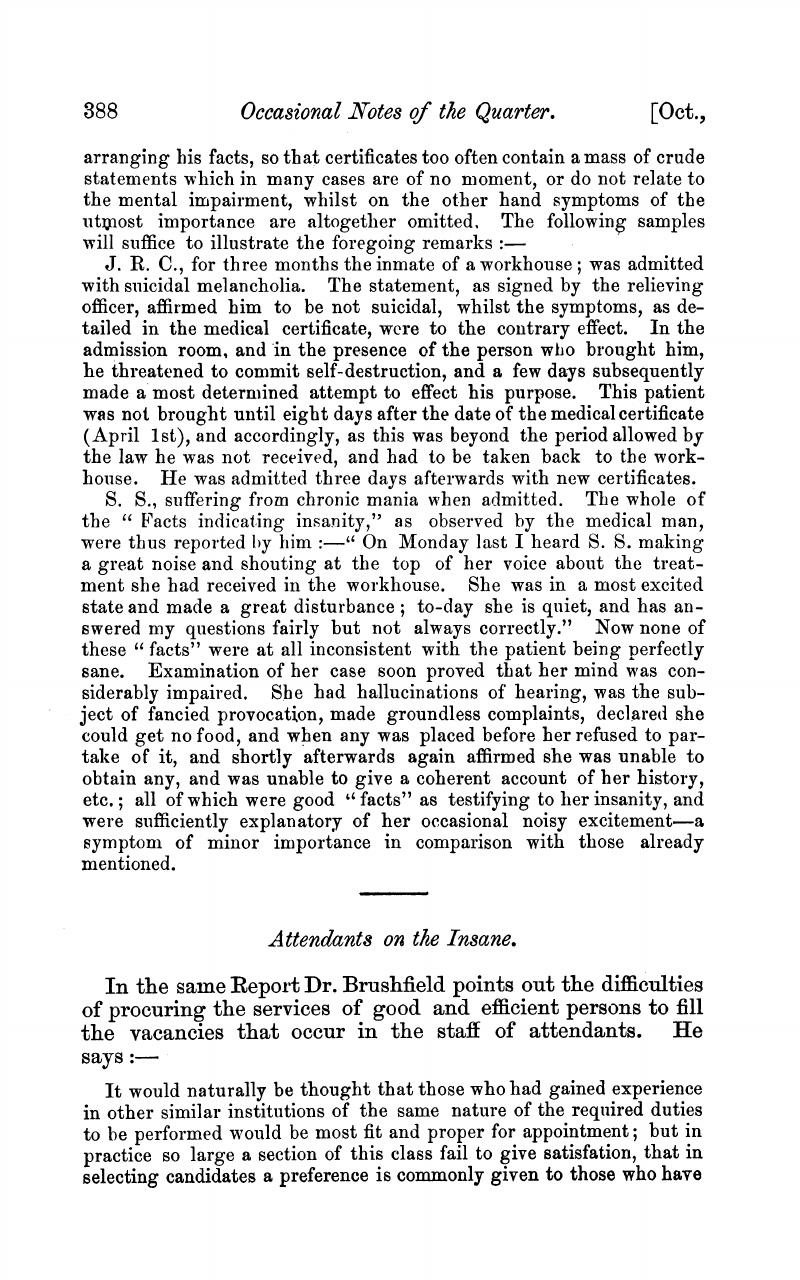No CrossRef data available.
Article contents
Attendants on the Insane
Published online by Cambridge University Press: 19 February 2018
Abstract

- Type
- Part I.—Original Articles
- Information
- Copyright
- Copyright © Royal College of Psychiatrists, 1871
References
* “We have reason to believe that attendants obtain employment who, if due enquiries were made, would be ascertained to have been dismissed for misconduct from previous situations. In all cases of doubt, application should be made to this office for information, which would be readily furnished.”—(17th Report of Commissoners in Lunacy, p. 38.)Google Scholar
* The plan followed in Scotland is thus alluded to in the last report of the Scotch Board:—“With the view of eliminating from the ranks of attendants all persons discharged from asylums for any grave fault, we require that all engagements and discharges shall be reported to us in order that we may take measures to prevent the re-engagement in another asylum of any one who has been found unsuitable. By this means we hope to render the re-engagement in a similar capacity, of discharged attendants a matter of some difficulty, and so to afford greater inducements to steadiness and good behaviour. During the past year, two attendants who had concealed the fact of having been previously in asylum service were immediately discharged on the receipt of intimation to this effect from the Board. We cannot, however, expect to reap the full benefits of this practice until the emoluments of attendants are made such as to render their discharge a much more sensible punishment than it is at present.”Google Scholar



eLetters
No eLetters have been published for this article.